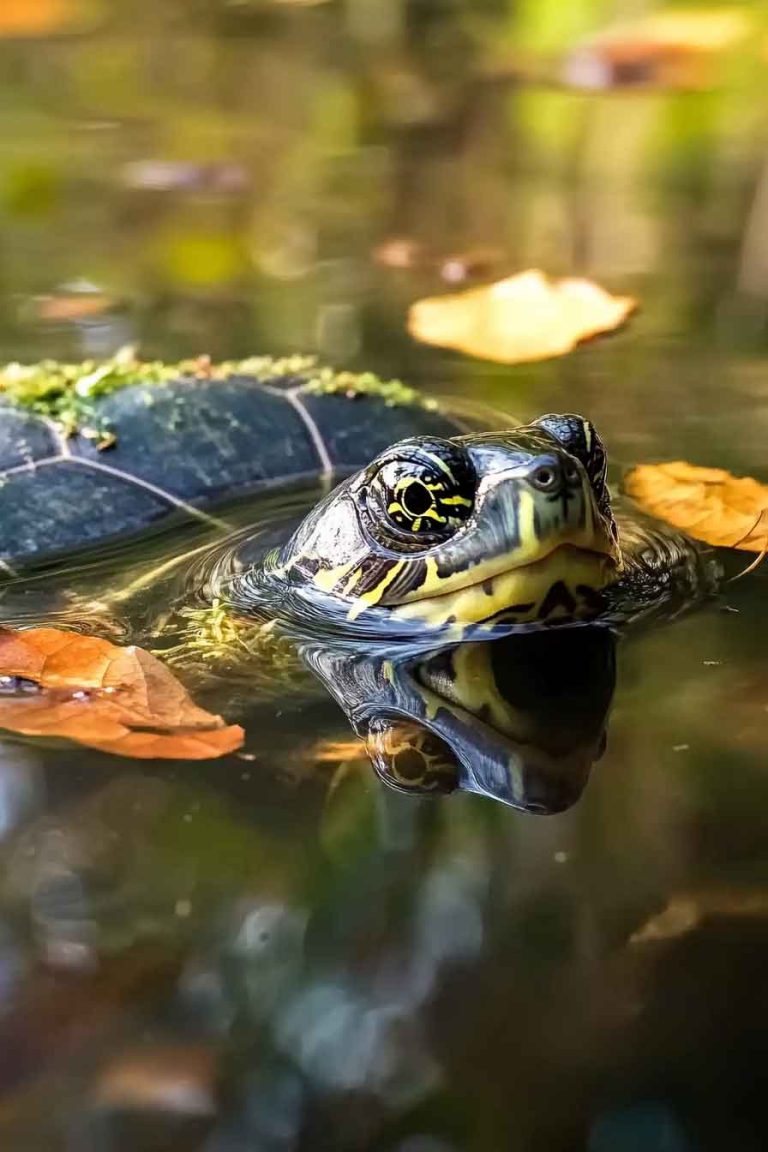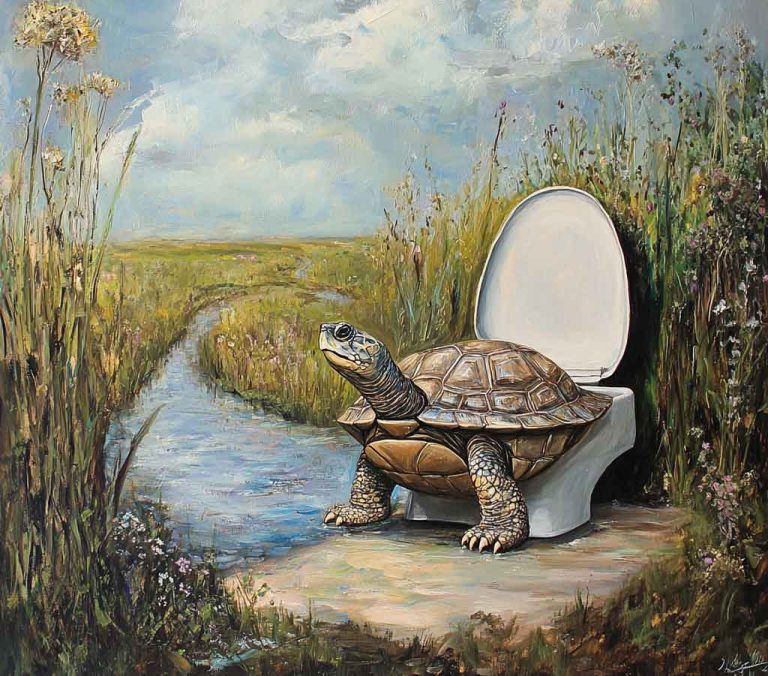Musk Turtle Pet Care Guide: Everything You Need to Know to Get Started
Hey there, turtle enthusiast! If you’re thinking about bringing a musk turtle into your home, or if you’ve already got one and want to make sure you’re doing everything right, I’m here to help you out. I’ve put together this complete guide to cover everything you need to know about caring for these adorable little…
Hey there, turtle enthusiast! If you’re thinking about bringing a musk turtle into your home, or if you’ve already got one and want to make sure you’re doing everything right, I’m here to help you out. I’ve put together this complete guide to cover everything you need to know about caring for these adorable little reptiles.
Musk turtles make fantastic pets, and I want to share all my knowledge with you so your new friend can live their best life. From setting up the perfect tank to understanding their diet and behavior, I’ll walk you through each step. Trust me, once you understand what these turtles need, you’ll find they’re actually pretty easy to care for.
Whether this is your first time keeping a musk turtle or you’re just looking to brush up on your care techniques, I’ve got you covered. Let’s dive in and learn how to be the best musk turtle parent you can be!
Basic Information About Musk Turtles
Before I get into the nitty-gritty of care, let me introduce you to these fascinating creatures. Understanding the basics will help you provide better care.
Scientific Name: Sternotherus odoratus
Common Names: Musk turtle, Eastern musk turtle, or Stinkpot (yes, that’s really a nickname!)
Adult Size: 7.5-12.5 cm (3-5 inches)
Maximum Size: 4 to 4.5 inches for a fully grown musk turtle
Lifespan: 40-60 years (that’s a long-term commitment, friend!)
Diet: Small snails, mollusks, crayfish, aquatic insects like dragonfly and damselfly nymphs. They’ll also eat small tadpoles and terrestrial insects that fall into the water. Occasionally, they’ll munch on plant matter like Elodea species or duckweed, though they’re not big vegetarians.
Natural Range: From the Mississippi River to the Unaka Mountains
Behavior: Here’s where the “Stinkpot” nickname comes in. When frightened, this turtle will quickly release a noxious liquid from its musk glands as a defensive tactic. Don’t worry though, they don’t do this all the time!
Clutch Size: 1-9 eggs
Legal Status in USA: Yes, they’re legal to keep as pets
Conservation Status: Least Concern
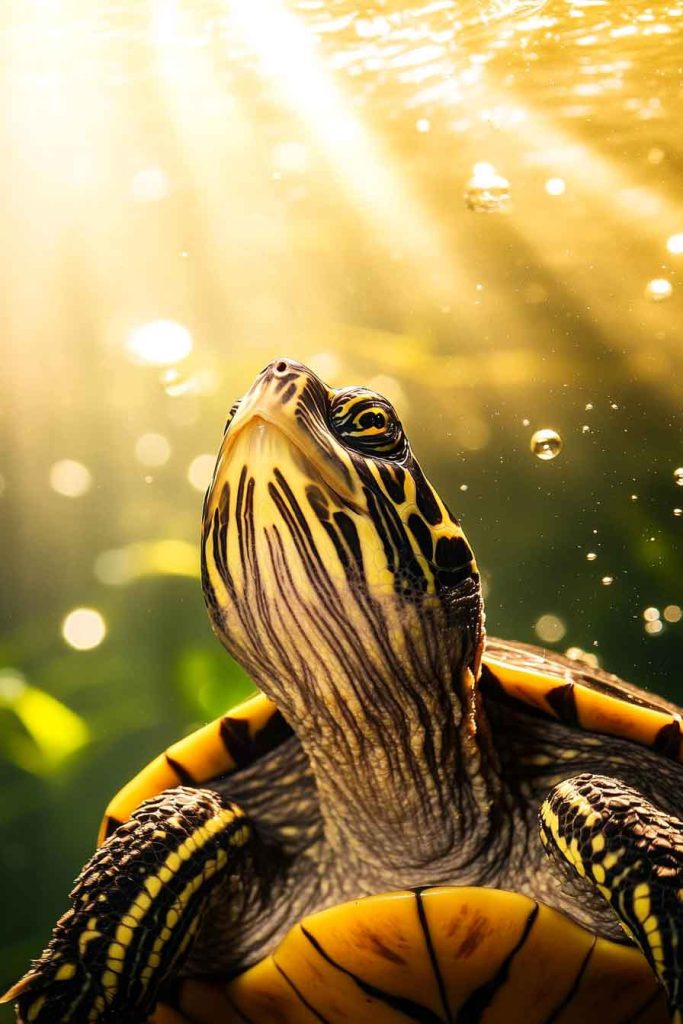
Can You Keep a Musk Turtle as a Pet?
Absolutely! I’m excited to tell you that musk turtles make wonderful pets. The common musk turtle, which you might hear called the Eastern musk turtle or stinkpot, is one of my top recommendations for both beginners and experienced reptile keepers.
What I love about musk turtles is their manageable size and straightforward care requirements. They’re not like those massive turtles that need enormous outdoor ponds. Instead, you can keep them happily in a well-maintained freshwater aquarium right in your home.
To keep your musk turtle healthy, you’ll need to set them up with a filtered aquarium and a reliable heater. Their diet consists of live or frozen worms, insects, and fish, which you can easily find at pet stores or online. I’ll go into much more detail about all of this later in the guide.
Are Musk Turtles Easy to Take Care Of?
Here’s the good news I want to share with you: yes, musk turtles are relatively easy to care for! This is one of the main reasons I recommend them to people who are new to keeping turtles.
Musk turtles have a naturally mellow temperament, which makes them pleasant to have around. They do well both in captivity and in the wild, which tells you they’re pretty adaptable. I’ve found that as long as you provide them with a clean, spacious habitat, plenty of fresh water, and proper food, your turtle will thrive.
One thing I need to mention is that musk turtles prefer cooler water temperatures compared to some other turtle species. If the water gets too warm, they can actually become sick, so you’ll need to monitor this carefully. But don’t let this worry you too much. Once you’ve got your setup dialed in, maintaining the right temperature becomes second nature.
The key things your musk turtle needs are clean water and plenty of hiding places where they feel safe and secure. Give them these basics, and you’re well on your way to being a great musk turtle owner.
What Does a Musk Turtle Need in a Tank?
Let me walk you through the tank requirements, because getting this right from the start will make your life so much easier.
Tank Size: You’ll need a tank of at least 20 gallons. I know that might sound like a lot, but remember, your turtle needs room to swim and move around comfortably. If you can go bigger, even better!
Water Depth: Aim for 6-12 inches of water depth. Musk turtles aren’t the strongest swimmers compared to some species, so they appreciate having enough depth to swim but not so much that they feel overwhelmed.
Water Temperature: This is crucial, so pay attention. For adult musk turtles, keep the water temperature around 72-78 degrees Fahrenheit. For juveniles, they like it a bit warmer at 78-80 degrees Fahrenheit.
Hiding Places: I can’t stress this enough – your musk turtle needs plenty of hiding spots. These make them feel safe and reduce stress. You can use rocks, driftwood, PVC pipes, or artificial caves. Get creative!
Basking Spot: Even though musk turtles spend most of their time in the water, they still need a place to get out, dry off, and warm up. This is essential for their health.
UVB Lighting: Your turtle needs proper UVB lighting to synthesize vitamin D3, which helps them absorb calcium. Without it, they can develop serious health problems.
Filtration: Clean water is non-negotiable. You’ll need a good quality filter to keep the water clean and healthy.
How to Take Care of a Musk Turtle: The Complete Guide
Now I’m going to break down each aspect of musk turtle care in detail. Follow these guidelines, and I promise you’ll have a happy, healthy turtle.
Housing Your Musk Turtle
Setting up the perfect home for your musk turtle is one of the most important things you’ll do. Let me share what I’ve learned about creating an ideal habitat.
Musk turtles are semi-aquatic, which means they need both water and land areas in their enclosure. I recommend starting with at least a 20-gallon tank, though a 30 or 40-gallon tank gives them even more room to explore and exercise.
The water depth should be at least 6 inches, but I’ve found that 8-10 inches works really well for most adult musk turtles. They’re not strong swimmers, so you don’t want the water too deep. At the same time, they need enough depth to swim around comfortably.
You absolutely must include a basking area. Even though musk turtles don’t bask as much as some other species, they still need the option. This can be a floating platform, a piece of driftwood that breaks the surface, or a commercial turtle dock. Make sure it’s stable and easy for your turtle to climb onto.
The basking area needs proper lighting. I use a turtle-safe basking lamp that provides both heat and UVB radiation. Position the lamp so the basking spot reaches about 85-90 degrees Fahrenheit. The UVB light should be on for 10-12 hours a day to mimic natural day/night cycles.
Here’s a pro tip I want to share with you: make sure the tank has a secure lid! Musk turtles can be surprisingly good climbers, and you don’t want to come home to find your turtle exploring your living room floor.
Heating Your Musk Turtle’s Tank
Temperature control is critical for your musk turtle’s health, so I’m going to explain exactly what you need to do.
As I mentioned earlier, adult musk turtles need water temperatures between 72-78 degrees Fahrenheit, while juveniles prefer 78-80 degrees. To maintain these temperatures consistently, you’ll need a submersible aquarium heater.
I recommend getting a heater that’s appropriately sized for your tank. A good rule of thumb is about 5 watts per gallon of water. For a 20-gallon tank, you’d want a 100-watt heater. Always check the heater’s specifications to make sure it can heat your tank size.
Place the heater in an area with good water flow, typically near your filter output. This helps distribute the heat evenly throughout the tank. And please, invest in a reliable aquarium thermometer so you can monitor the water temperature daily.
For the basking area, you’ll need a basking lamp positioned above it. This should create a temperature gradient in the tank, with the basking spot at 85-90 degrees Fahrenheit and the water cooler. This gradient allows your turtle to thermoregulate by moving between warmer and cooler areas.
During winter months, you might need to adjust your heating setup, especially if you live in a colder climate. Keep an eye on those temperatures!
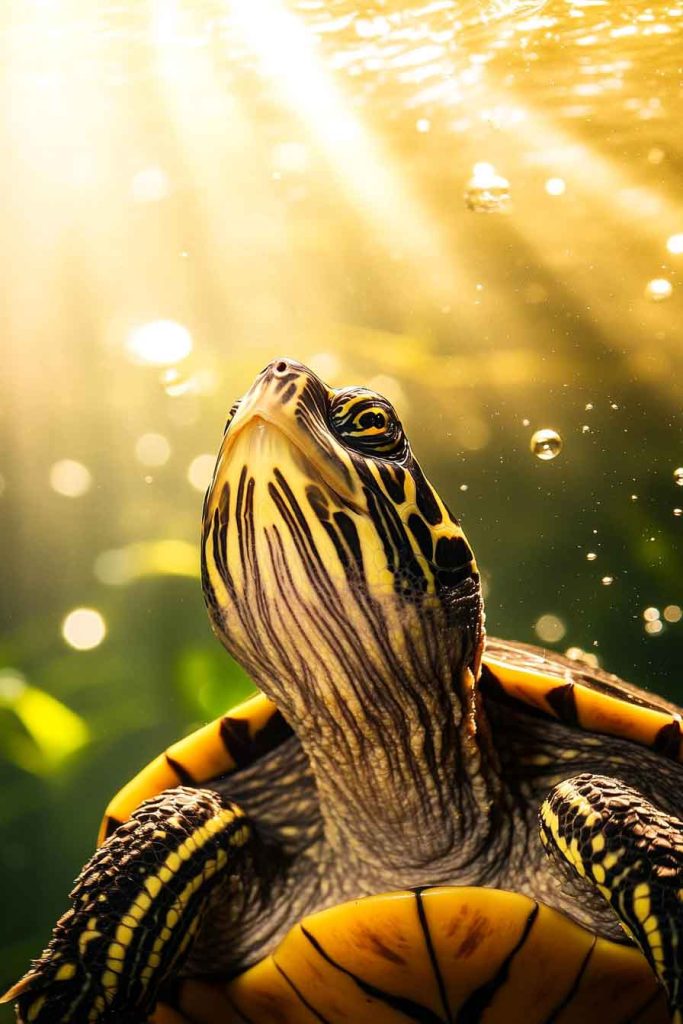
Water Care and Quality
Water quality is absolutely critical for musk turtle health. Poor water conditions are one of the leading causes of illness in captive turtles, so I want you to understand this thoroughly.
Musk turtles are extremely sensitive to water quality. Even small amounts of ammonia, nitrites, or excessive nitrates can make them sick. This is why I’m so adamant about proper filtration and regular water changes.
Filtration: Invest in a good quality filter rated for at least twice your tank’s volume. For a 20-gallon tank, get a filter rated for 40 gallons. Turtles are messy eaters and produce a lot of waste, so you need powerful filtration. I prefer canister filters because they provide excellent mechanical, chemical, and biological filtration.
Water Changes: Even with a great filter, you need to do regular water changes. I recommend changing 25-30% of the water weekly. This helps remove accumulated waste products and keeps the water fresh.
Water Parameters: Test your water regularly using an aquarium test kit. You want ammonia and nitrites at 0 ppm, and nitrates below 40 ppm. The pH should be between 6.5 and 8.0, which is the range musk turtles prefer.
Dechlorination: Always treat tap water with a dechlorinator before adding it to your turtle’s tank. Chlorine and chloramines in tap water can harm your turtle and kill beneficial bacteria in your filter.
Temperature Consistency: As I mentioned before, keep that water temperature stable. Sudden temperature fluctuations can stress your turtle and make them susceptible to illness.
Here’s something else I want you to know: musk turtles will often defecate in the water shortly after eating. If you notice this happening, do a spot cleaning with a turkey baster or small siphon to remove the waste before it breaks down and affects water quality.
Tank Decoration and Enrichment
Creating an interesting and stimulating environment for your musk turtle isn’t just about looks. It’s about giving them mental stimulation and places to explore and hide.
Substrate: This is optional for musk turtles. I actually prefer bare-bottom tanks because they’re easier to clean and maintain. However, if you want substrate for aesthetic reasons, use large river rocks that your turtle can’t accidentally swallow. Avoid gravel or small stones.
Hiding Places: I can’t emphasize this enough – musk turtles need multiple hiding spots. They’re naturally shy creatures, and having places to retreat makes them feel secure. You can use:
- Caves (commercial or DIY from slate rocks)
- PVC pipe sections (make sure they’re large enough for your turtle)
- Driftwood
- Rock piles (make sure they’re stable and won’t collapse)
- Artificial plants with dense foliage
Live Plants: If you want to add live aquatic plants, go for hardy species that can tolerate the conditions in a turtle tank. Java fern, Anubias, and hornwort are good choices. Be aware that your turtle might nibble on them occasionally.
Basking Platform: I’ve already mentioned this, but I want to emphasize that it needs to be stable and textured so your turtle can grip it easily. Commercial turtle docks work great, or you can create your own from driftwood or stacked rocks.
Swimming Space: Don’t over-decorate! Your turtle needs open swimming space too. I try to aim for about 60% open water and 40% decorated areas.
One decorating mistake I see people make is using sharp or rough decorations that can injure their turtle. Always choose smooth objects and check them for any sharp edges that might scratch your turtle’s shell or skin.
Feeding Your Musk Turtle
Understanding what and how to feed your musk turtle is essential for keeping them healthy. Let me share everything I know about musk turtle nutrition.
Natural Diet: In the wild, musk turtles are carnivorous, eating a variety of small snails, mollusks, crayfish, and aquatic insects. They’ll actively hunt dragonfly nymphs, damselfly nymphs, and other aquatic invertebrates. They’ll also grab any terrestrial insect unfortunate enough to fall into the water, and they love catching small tadpoles.
While they’re primarily carnivorous, musk turtles will occasionally eat plant matter like Elodea species or duckweed. However, plants make up a very small part of their diet.
Captive Diet: In captivity, I feed my musk turtles a varied diet that includes:
Commercial Foods:
- High-quality turtle pellets should form the base of their diet. I use pellets specifically formulated for aquatic turtles.
- These provide balanced nutrition and are convenient.
Live and Frozen Foods:
- Earthworms (these are a favorite!)
- Bloodworms
- Blackworms
- Brine shrimp
- Daphnia
- Crickets
- Mealworms (as an occasional treat, not a staple)
- Small feeder fish (occasionally)
- Snails (they love crushing and eating these!)
Feeding Schedule: For juvenile musk turtles (under 1 year), I feed them daily. They’re growing rapidly and need regular nutrition. For adults, I feed every other day or even every third day. Overfeeding can lead to obesity and health problems.
Feeding Amount: A good rule I follow is to give them only what they can consume in about 15-20 minutes. If there’s leftover food after this time, I’m feeding too much.
Feeding Tips:
- Feed your turtle in the water, where they’re comfortable eating
- Remove uneaten food after 20 minutes to prevent water quality issues
- Vary the diet to ensure complete nutrition
- Consider using a separate feeding tank if water quality becomes an issue
- Some turtles are shy feeders initially. Give them privacy if they won’t eat while you’re watching.
Supplements: Dust feeder insects with calcium powder (without vitamin D3 if you’re providing proper UVB lighting) once or twice a week. This helps prevent metabolic bone disease.
Foods to Avoid:
- Processed human foods
- Dairy products
- Bread or other carbohydrates
- Citrus fruits
- Iceberg lettuce (no nutritional value)
Watch your turtle’s body condition. If they’re becoming round and chubby, cut back on feeding. If you can see their bones prominently, increase feeding.
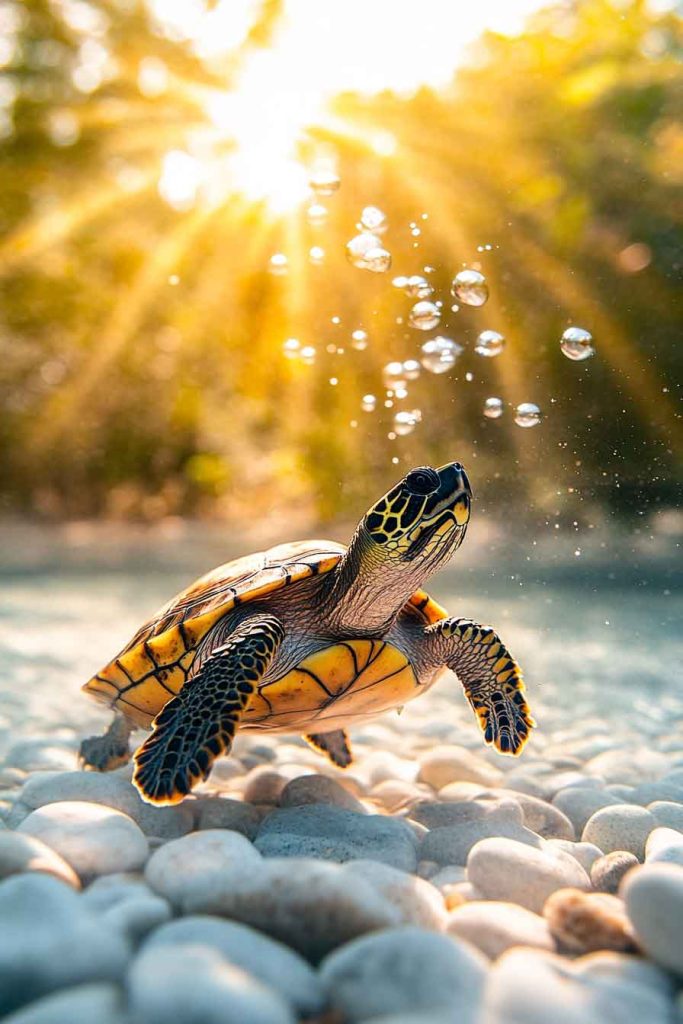
Breeding Musk Turtles
If you’re interested in breeding musk turtles, I want to give you some important information about the process. Breeding should only be attempted if you’re prepared for the responsibility and have homes lined up for any hatchlings.
Sexual Maturity: Musk turtles typically reach sexual maturity between 3-5 years of age. Males mature slightly earlier than females.
Natural Breeding: If you have a healthy male and female together in proper conditions, they may breed naturally without any encouragement from you. The key is maintaining optimal health and environmental conditions year-round.
Nesting Box: If you have a female that may lay eggs, you need to provide a proper nesting area. I use a large, deep container filled with a moist substrate. Spider Life Substrate or a mixture of sand and coconut coir works well. The substrate should be deep enough (at least 6 inches) for the female to dig and lay her eggs.
The nesting box should be easily accessible from the water, and the substrate should be moist but not waterlogged. Too much moisture can cause the eggs to develop mold, while too little can cause them to desiccate.
Egg Laying: Females typically lay 1-9 eggs per clutch and may produce multiple clutches in a breeding season. If you’re not planning to incubate the eggs, you’ll need to remove them promptly.
Incubation: If you want to hatch the eggs, carefully remove them from the nesting box without rotating them. Mark the top of each egg with a pencil so you can maintain the same orientation.
Place the eggs in an incubator with the substrate (vermiculite mixed with water works great for this). The incubation temperature should be around 84°F (29°C). The humidity needs to be high enough to prevent the eggs from drying out but not so high that they become waterlogged.
At 84°F, the eggs typically hatch after about 60-80 days. Temperature affects the incubation period and, interestingly, can influence the sex of the hatchlings.
Hatchling Care: Baby musk turtles are tiny and fragile. They need shallow water (just 2-3 inches), pristine water quality, and tiny food items like baby brine shrimp or finely chopped earthworms.
Important Note: Breeding turtles is a serious responsibility. Make sure you have the space, resources, and time to care for hatchlings before attempting to breed. Also, check your local laws regarding breeding and selling turtles.
Common Health Issues and Prevention
I want to help you keep your musk turtle healthy by teaching you about common health problems and how to prevent them.
Respiratory Infections: These are serious and can be fatal if not treated. Signs include wheezing, breathing with the mouth open, mucus around the nose or mouth, and lethargy. Prevention is all about maintaining proper temperatures and avoiding drafts.
Shell Rot: This bacterial or fungal infection appears as soft spots, discoloration, or a foul smell from the shell. Keep water clean and ensure your turtle has proper basking time to prevent this.
Metabolic Bone Disease: This results from inadequate calcium or UVB lighting. The shell becomes soft, bones become weak, and the turtle may have difficulty moving. Prevention requires proper UVB lighting and calcium supplementation.
Parasites: Many wild-caught turtles carry parasites. Signs include weight loss despite eating, lethargy, and abnormal feces. A vet can diagnose and treat parasitic infections.
Vitamin A Deficiency: This causes swollen eyes and respiratory problems. Feeding a varied diet prevents this issue.
When to See a Vet: Any time you notice changes in behavior, appetite, or appearance, consult a reptile veterinarian. It’s better to catch problems early.
Handling Your Musk Turtle
You’re probably wondering about handling your musk turtle, so let me give you some guidance on this topic.
Musk turtles are generally not fond of being handled, and I want you to understand that this is normal and okay. They’re not like dogs or cats that seek out human interaction. They’re wild animals that tolerate captivity but don’t necessarily enjoy being picked up.
That said, some individual musk turtles are more tolerant of handling than others. Some may come out of their shell to explore when held, while others remain tucked in and stressed.
Handling Guidelines:
- Keep handling to a minimum – only when necessary for health checks or tank maintenance
- Always support their entire body when picking them up
- Be gentle and move slowly to avoid stressing them
- Wash your hands before and after handling (to protect both you and your turtle)
- Watch out for their “stinkpot” defense mechanism – they may release musk when scared
- Never squeeze or grip them tightly
- Be aware that they can bite. While not usually aggressive, a scared turtle may nip
Do Musk Turtle Bites Hurt?
I want to be honest with you: yes, musk turtle bites can hurt. They have sharp little beaks designed for crushing snails and insects, and while they can’t cause serious injury to a human, they can definitely pinch and break skin. Their bite is more painful than dangerous.
The best way to avoid bites is to handle your turtle properly and minimize handling overall. If you do get bitten, don’t panic and pull away suddenly, as this can injure the turtle. Instead, gently place the turtle back in water, and they’ll usually let go.
Long-Term Commitment
Before I wrap up, I need to emphasize something really important: musk turtles can live 40-60 years with proper care. This isn’t a short-term pet commitment. Your musk turtle could be with you for decades!
This means you need to think long-term:
- Can you provide consistent care for potentially 50+ years?
- What happens if you move, go to college, or have major life changes?
- Do you have the financial resources for ongoing care and potential veterinary expenses?
- Are you prepared to make housing arrangements that accommodate a turtle if you need to relocate?
I’m not trying to discourage you, but I want you to go into this with your eyes open. These turtles deserve committed owners who will care for them for their entire lives.
My Final Thoughts
I hope this comprehensive guide has given you all the information you need to provide excellent care for your musk turtle. These fascinating little creatures can bring years of enjoyment when properly cared for.
The key takeaways I want you to remember are:
- Provide clean water with proper filtration and regular water changes
- Maintain appropriate temperatures for both water and basking areas
- Offer a varied, nutritious diet
- Create an environment with plenty of hiding places
- Provide proper UVB lighting
- Minimize handling and respect that they’re wild animals
- Commit to long-term care
With the right setup and consistent care, your musk turtle will thrive. They’re fascinating to watch, relatively easy to maintain once you’ve got everything dialed in, and can become a longtime companion.
If you’re bringing home a musk turtle for the first time, take your time setting up their habitat properly before you bring them home. Getting everything right from the start will save you headaches later and give your turtle the best possible beginning in their new home.
Thanks for taking the time to read this guide! I wish you and your musk turtle many happy years together. If you follow these care guidelines, you’ll be well on your way to being an excellent musk turtle owner. Your little stinkpot will thank you for it!
Remember, being a responsible turtle owner means continuously learning and adapting your care as needed. Don’t hesitate to consult with reptile veterinarians or experienced turtle keepers if you have questions or concerns. Your turtle’s health and happiness depend on you, and I know you’re going to do a great job!
Happy turtle keeping, my friend!




